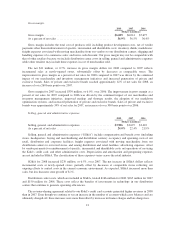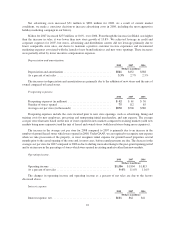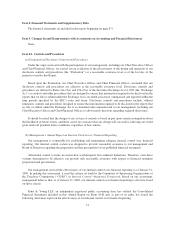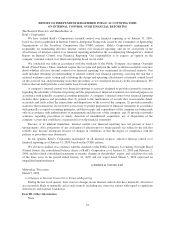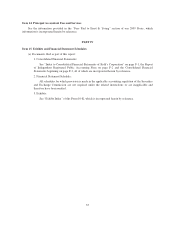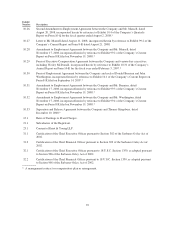Kohl's 2008 Annual Report Download - page 29
Download and view the complete annual report
Please find page 29 of the 2008 Kohl's annual report below. You can navigate through the pages in the report by either clicking on the pages listed below, or by using the keyword search tool below to find specific information within the annual report.gross margins are calculated by applying a cost-to-retail ratio to the retail value of the inventories. The use of
RIM will result in inventories being valued at the lower of cost or market as markdowns are currently taken as a
reduction of the retail value of inventories.
Based on a review of historical clearance markdowns, current business trends, expected vendor funding and
discontinued merchandise categories, an adjustment to inventory is recorded to reflect additional markdowns
which are estimated to be necessary to liquidate existing clearance inventories and reduce inventories to the
lower of cost or market. Management believes that our inventory valuation approximates the net realizable value
of clearance inventory and results in carrying inventory at the lower of cost or market.
Vendor Allowances
We record vendor allowances and discounts in the income statement when the purpose for which those
monies were designated is fulfilled. Allowances provided by vendors generally relate to profitability of inventory
recently sold and, accordingly, are reflected as reductions to cost of merchandise sold as negotiated. Vendor
allowances will fluctuate based on the amount of promotional and clearance markdowns necessary to liquidate
the inventory. Vendor allowances received for advertising or fixture programs reduce our expense or expenditure
for the related advertising or fixture program when appropriate. See also Note 1 to the consolidated financial
statements, “Business and Summary of Accounting Policies.”
Insurance Reserve Estimates
We use a combination of insurance and self-insurance for a number of risks including workers’
compensation, general liability and employee-related health care benefits, a portion of which is paid by our
associates. We use a third-party actuary, which considers historical claims experience, demographic factors,
severity factors and other actuarial assumptions, to estimate the liabilities associated with these risks. A change in
claims frequency and severity of claims from historical experience as well as changes in state statutes and the
mix of states in which we operate could result in a change to the required reserve levels. We retain the initial risk
of $500,000 per occurrence under our workers’ compensation insurance policy and $250,000 per occurrence
under our general liability policy. We also have a lifetime medical payment limit of $1.5 million.
Impairment of Assets and Closed Store Reserves
We have a significant investment in property and equipment and favorable lease rights. The related
depreciation and amortization is computed using estimated useful lives of up to 50 years. We review our long-
lived assets held for use (including favorable lease rights) for impairment whenever an event or change in
circumstances, such as decisions to close a store, indicates the carrying value of the asset may not be recoverable.
We have historically not experienced any significant impairment of long-lived assets or closed store reserves.
Decisions to close a store can also result in accelerated depreciation over the revised useful life. When operations
at a leased store are discontinued, a reserve is established for the discounted difference between the rent and the
expected sublease rental income. A significant change in cash flows, market valuation, demand for real estate or
other factors, could result in an increase or decrease in the reserve requirement or impairment charge.
Income Taxes
We pay income taxes based on tax statutes, regulations and case law of the various jurisdictions in which we
operate. At any one time, multiple tax years are subject to audit by the various taxing authorities. Our effective
income tax rate was 37.9% in 2008, 37.8% in 2007 and 37.5% in 2006. The effective rate is impacted by changes
in law, location of new stores, level of earnings and the result of tax audits.
Operating Leases
As of January 31, 2009, we leased 641 of our 1,004 retail stores. Many lease agreements contain rent
holidays, rent escalation clauses and/or contingent rent provisions. We recognize rent expense on a straight-line
basis over the expected lease term, including cancelable option periods where failure to exercise such options
would result in an economic penalty. We use a time period for our straight-line rent expense calculation that
equals or exceeds the time period used for depreciation. In addition, the commencement date of the lease term is
29




